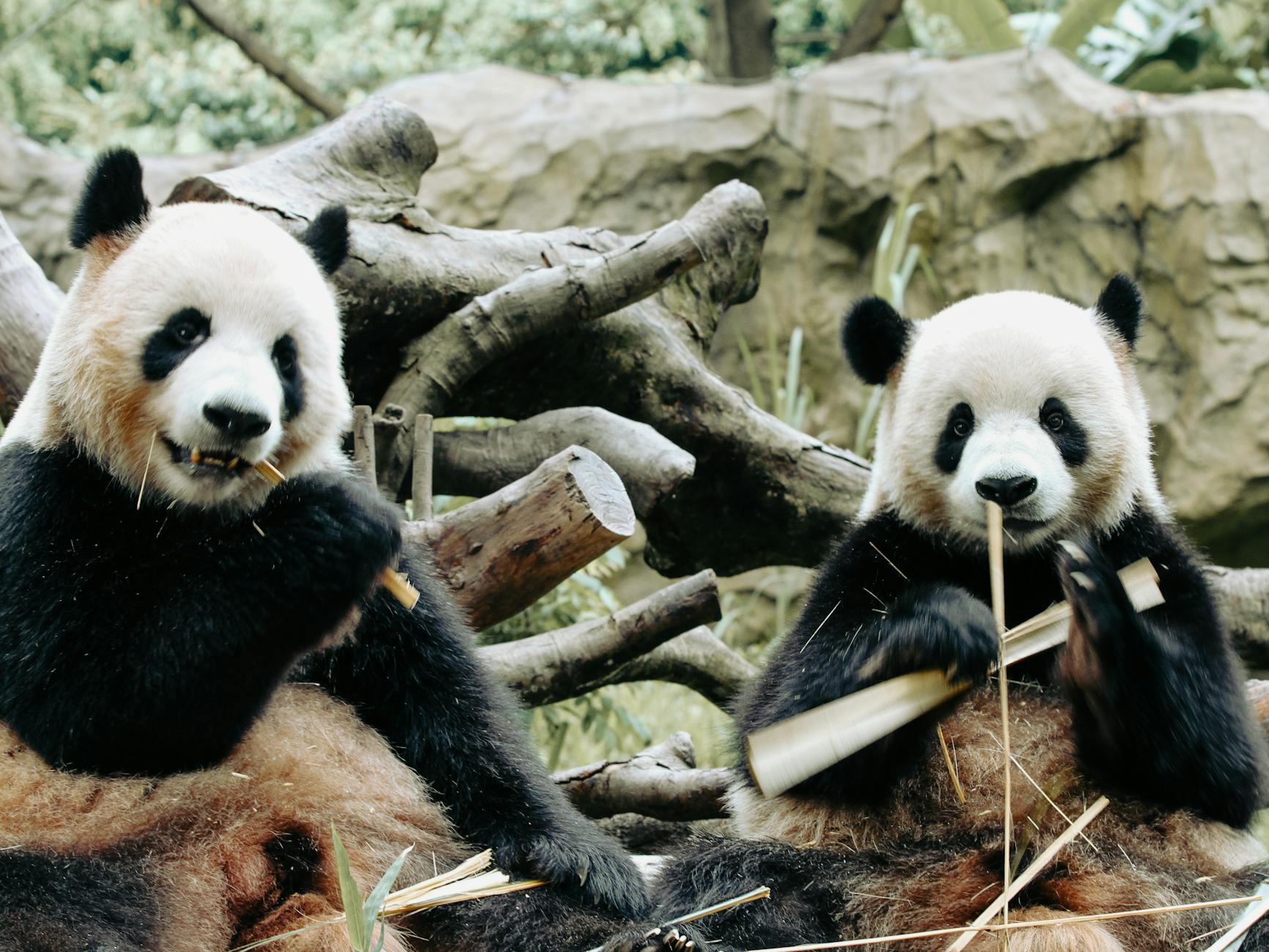
Beyond the Black and White: Unveiling the Fascinating Giant Panda
The giant panda. With its instantly recognizable black and white coat and undeniably cute appearance, it has captured hearts around the world. But this beloved bear is more than just a cuddly symbol – it’s a fascinating creature with a unique evolutionary history and a crucial role in its ecosystem.
A Living Fossil:
Giant pandas belong to the Ursidae family, which includes bears like grizzlies and black bears. However, their diet sets them apart. Unlike most bears, pandas are obligate herbivores, relying primarily on bamboo for sustenance. This unique specialization has earned them the nickname “bamboo bear.” Their digestive system, however, is more suited to a carnivorous diet, highlighting their status as a living fossil, a species that retains characteristics from its evolutionary ancestors.
Masters of Bamboo:
Despite their digestive limitations, pandas have become remarkably adept at consuming bamboo. Their strong jaws and specialized teeth allow them to crush tough bamboo stalks, while their “thumb” (actually a modified wrist bone) helps them grasp and manipulate these fibrous plants.
Beyond the Black and White:
- Camouflage Kings: While their black and white coat may seem conspicuous, it actually provides surprisingly good camouflage in their natural habitat of bamboo forests. The interplay of light and shadow through the bamboo stalks disrupts the outline of their bodies, making them less visible to predators.
- Solitary Lives: Pandas are generally solitary creatures, except during mating season. They spend most of their days foraging for bamboo and resting in trees.
- Conservation Challenges: Sadly, giant pandas are classified as vulnerable on the IUCN Red List. Habitat loss due to deforestation and a low birth rate are the primary threats to their survival.
Protecting a Treasure:
Fortunately, dedicated conservation efforts are underway:
- Habitat Protection: Establishing and managing protected areas is crucial for safeguarding remaining panda habitat.
- Breeding Programs: Captive breeding programs aim to increase panda populations and reintroduce them into suitable wild habitats.
- Community Engagement: Working with local communities to promote sustainable forestry practices and reduce human-panda conflict is essential for long-term success.
How You Can Help:
You can be part of the effort to save the giant panda:
- Support conservation organizations: Donate to or volunteer with groups working to protect pandas and their habitat.
- Reduce your environmental impact: Choose sustainable products and practices that minimize deforestation.
- Spread the word: Raise awareness about the importance of panda conservation and the threats they face.
By working together, we can ensure that this iconic creature continues to thrive in the wild for generations to come. Remember, even small actions can collectively make a difference in preserving this captivating symbol of the natural world.
More photos below ↓










